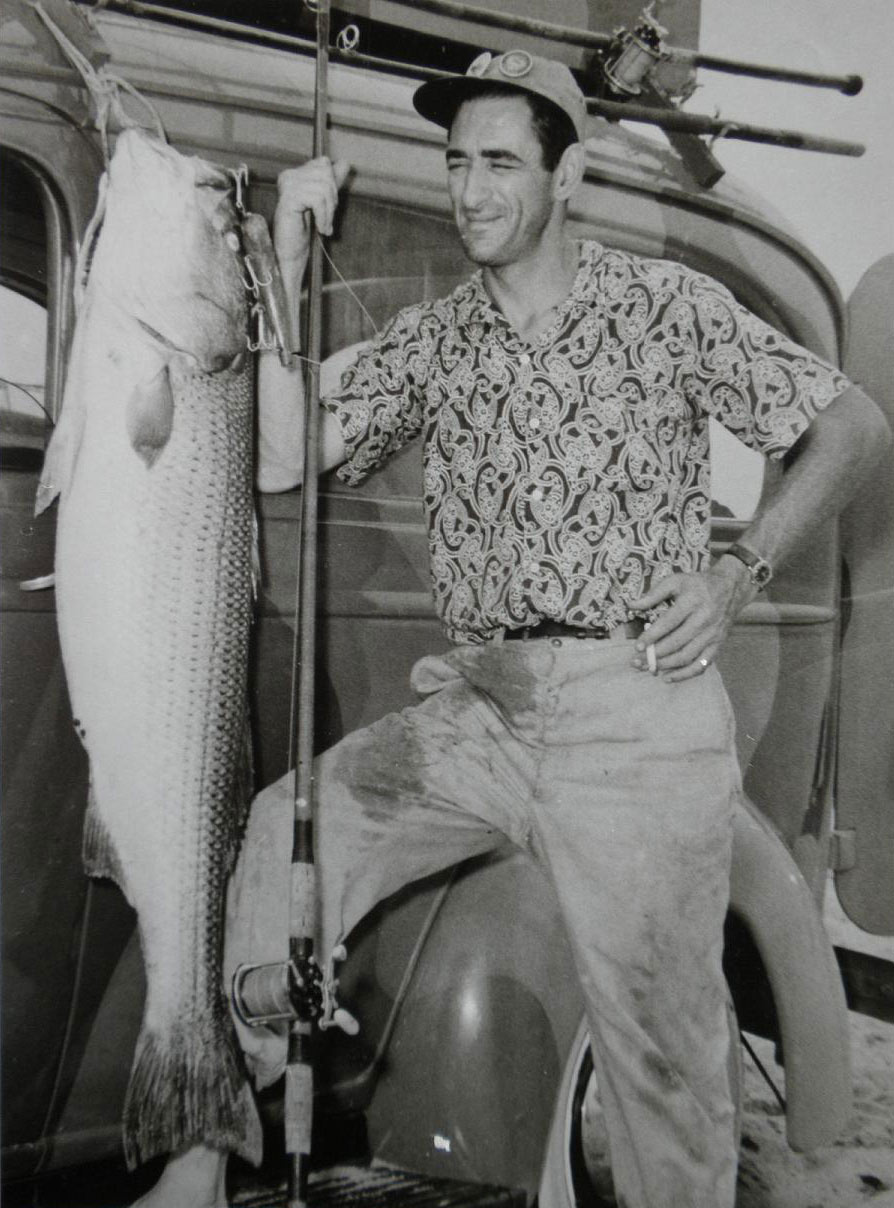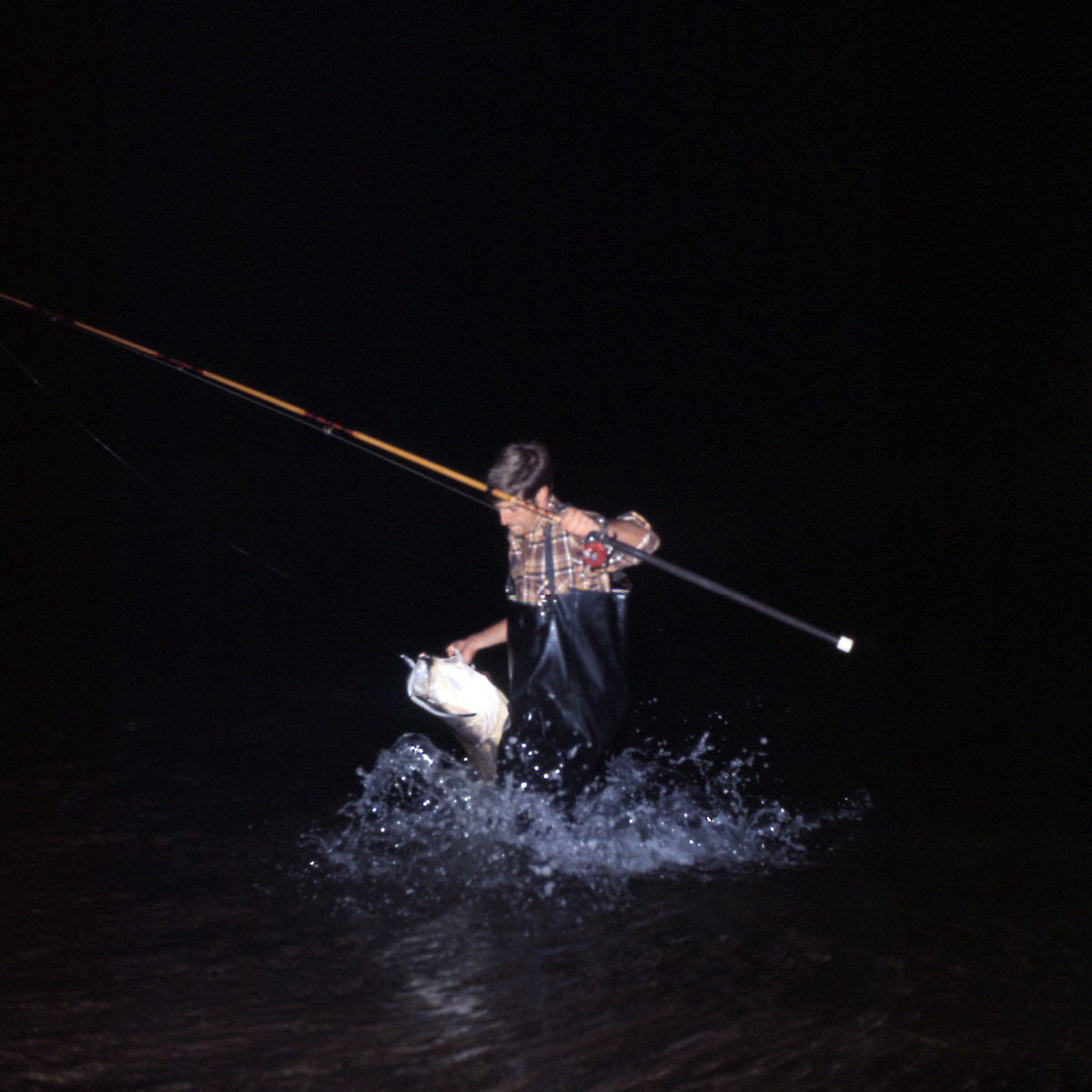
A look at how one of the most esteemed striper writers got his start.
The reason why I have had such appreciation for the outdoors all of my life is that I grew up fishing and hunting with my father and brother. And, the reason why I was 19 when I graduated high school was that I was on the water and in the woods when I was supposed to be in school. I went to college for so long that other college students, younger than my own kids, thought I was on the faculty. Still, I got lucky.
Great First Editor
A lifetime of reading about outdoor sports from the famous Ernest Hemingway to the many magazine writers of the day instilled a discernment in me for fishing stories that told of big fish in adventurous locations under platinum stars. I had wanted to write about the outdoors for 20 years before I actually did it. Even then it was a whimsical dream that I never really thought would happen. I knew little of what was required in those early days. A response for my article came quickly; “It’s a good piece and I would buy it if it had pictures,” the editor said. I went out and bought a camera, read the directions and shot a roll of expensive film that cost even more to have developed. This writing game, when I first aspired to be a player in it, was loaded with mysteries that were difficult to learn. There were typos, whiteout to cover them, manuscript packaging, and cover letters—all elements with which I was not familiar. Thank goodness, I did know how to type due to Yeoman School in the Navy.

I about soiled myself when Frank Woolner, editor of Salt Water Sportsman (SWS), sent me a check for $150 for “Block Island Safari.” In 1969 that was a week’s pay for a teacher getting $6,000 per year. Most important was my editor’s remarking, “Daignault, you Woonsocket Frenchman, you can write.” Coming from the most important editor in saltwater fishing at the time, his remark dwarfed the feeling of dancing all the way to the bank.
I later learned that within the SWS organization, Editor Woolner had been carrying on a managerial dispute with other magazine staffers hoping to promote more surfcasting. His position was that shore fishing was the seed stock of sea fishing; that invariably a person fishing the beach would end up getting a boat. Woolner’s problem was that he was unable to make the case without more articles on shore fishing, which apparently was where I came in. Boat fishing drew a lot of expensive full-page ads that helped pay the publication’s bills, so you could see how the dispute could rage for business reasons. I was lucky to be a part of us needing each other. At the time I simply wasn’t aware.
Once you have the imprimatur of a world-famous editor, you have it knocked. I learned quickly that all I had to do was mention his name as a regular contributor and I had a sale. Citing only some of the periodicals for which I wrote were Fishing World, Outdoor Life, True, the Man’s Magazine, Garcia Fishing Annual, The Fisherman Magazine, etc.
In 1977 my career took off. With a growing family, a life on the beach and a day job, I was way overextended. Beware your dreams. Still, my writing career was launched by a German World War II tank commander who had been fighting on our side now turned editor.
Spinoffs
No matter how well you write, a good editor can fix your drivel. The money and commensurate glory come from the pictures. As a surf writer it was clear to me that the shore fishing activity was not being supported by appropriate art. Even 40 years ago there were no night photos depicting surfcasting when in fact shore fishing, in the striper surf at least, is best done at night. I used to chuckle when photos in SWS of articles showed the author in a bright sun holding a very dead grip-and-grin of a striper. The pictures were wrong. In those days photo support for black and white interior pix had nothing in the way of night pictures for surfcasting. I began shooting night photos for publications that had never used one. I believe my SWS cover photo in August 1972—color slide film at night—was the first night cover photo SWS ever ran. Back when a buck bought more, I sold a slide for one-time use to an ad agency that paid $1,500, taken in the daytime, no less. That was a month’s pay in those days. Pictures, which prior to 1969 I hadn’t even known how to take, illustrated my slide lectures for angling clubs around the Northeast. I even did some hunting and shooting writing, but the striper business was much easier for me and most popular with the editors.

While I am identified for my writing, I have done a lot of related things that, while profitable, few of my readers have ever known about. I sold catalog illustrations and published a pair of surfcasting posters that were carried by a mail order house. (And you thought I only sold fish.) One time I was hired by an insurance company to research causes of a surfcaster drowning in a wrongful death lawsuit. (The guy’s family got a quarter-million because they blamed the waders.) I also have done a lot of contributions to the books of other authors and have even been interviewed on Westwood One.
Striper fishing books, and there have been eight of them spread over 30 years and still selling, sold like hotcakes at my seminars. At a Long Island show for The Fisherman, my wife and I took in just under $6,000. That would have been a year’s pay in 1969, the year Woolner jump-started my striper surf career.
When Frank Woolner passed on I realized that it was he who had changed my life. I’m an old man now who is satisfied with his life as a writer. Among the many lessons I learned at the time was that the editor is God. He is the reader’s agent providing information and entertainment for the reader’s interest. Good publications, like this one, provide a continuous stream of information meeting reader interests. Also, the editor calls the shots. It has been a privilege to be involved in the squid stink and salt spray of 50 years in the striper surf.
Recently David Ross, Ph.D. Senior Scientist Emeritus, Woods Hole Oceanographic Institution, lauded me telling Toby Lapinski, “I feel that Daignault would make a pretty good oceanographer.” No one ever told him that my office walls were once papered with rejection letters that go back fifty years.
Editor’s Note: If you’ve been looking to get your own start in the world of outdoor sportswriting, The Fisherman would love to hear from you in the New Year. Freelance fishing writers and photographers have been at our core for the past 50-plus years, and just as that first editor once told longtime Fisherman freelancer Frank Daignault, if it’s a good piece with pictures, we’ll buy it! If you’d like to share tips and tactics with fellow readers and get paid to do it, email us at [email protected].



